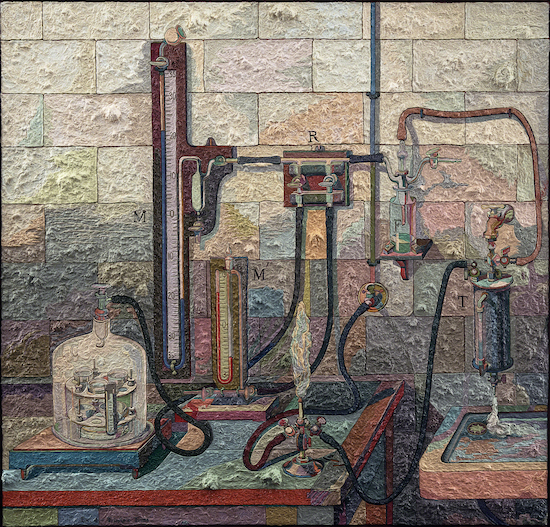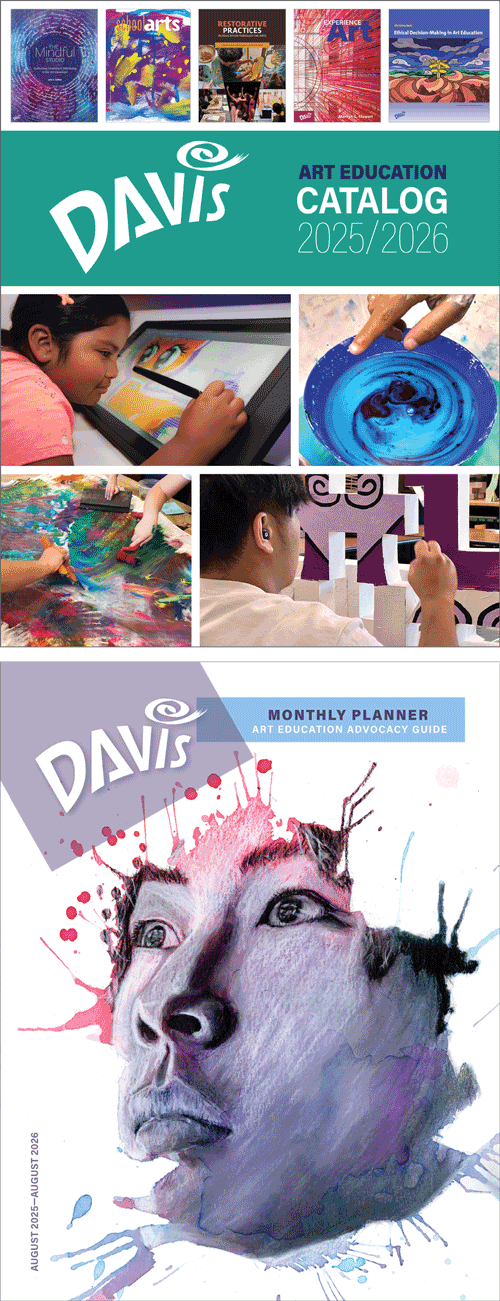Artist Birthday: Jess (Collins)
Jess (Collins) is probably best known for his incredibly complex collages. He was a painter who initially worked as a chemist. He started doing collages in the early 1950s after seeing the works of Surrealist artists who specialized in collage (such as Max Ernst and Kurt Schwitters).
Artist Birthday for 6 August: Jess (Jess Collins 1923–2004, United States)
Jess was a major figure in the art form of collage, starting in the early 1950s right until the year of his death.
 |
| Jess, Ex. 4 – Trinity’s Time, 1964. Oil and collage on canvas adhered to wood, 116.5 x 122.3 cm. The Museum of Modern Art, New York. © 2025 The Jess Collins Trust. (MOMA-P1590) |
Between 1959 and 1976 Jess worked on a series of thirty-two “Translations,” faithful reproductions in oil paint of a variety of found images including engravings, photographs, artworks and illustrations. Each work includes fragments of literary text, either integrated into the painting or written on the back. Such paintings became more complex over time, often including hundreds of distinct collage elements, with impasto that provided contrasting textures. His works emphasized the power of imagination and myth, in the belief that all matter was energy, and energy was infused with the human spirit.
Adhered to the back of Ex. 4-Trinity's Trine, is an 1887 article from Scientific American of a laboratory apparatus that is the source for the painting. The transformation contains nine layers of paint over the original pencil drawing. The work's title may allude to Jess' time with the Manhattan Project and to the first nuclear test (1945) that was called Trinity.
On the eve of developing Cubism with Pablo Picasso (1881–1973), Georges Braque (1883–1962) saw faux woodgrain pattern wallpaper in a shop. He adhered this to charcoal drawing compositions creating the first collages (called papier collé or “pasted paper” in French). After Picasso saw these he immediately created 100 collages himself. Progressive modernist artists in Paris, and the Italian Futurists (an offshoot of Cubism) soon eagerly immersed their bodies of work in the new art form. Collage also had a major impact on the Russian modernist Suprematism and Constructivism movements.
Collage because one of the major art forms of the movements of Dada and Surrealism, anti-establishment movements inspired as critiques of Western culture after the horrors of World War I (1914–1918), fitting in with their anti-art and found-object aesthetic. Late in his career, Henri Matisse (1869–1954) put a new spin on collage with his cut paper compositions that were his primary medium.
After World War II (1939–1945), collage became a mainstream art form in Western art. It was popular with many of the Abstract Expressionists in the 1950s and 1960s, and was also adopted by West Coast modernists who stressed in their work in “finding” the “magic of unknown things.” Into the 21st century, collage has remained a vital art form often combined with found object. It is particularly important in the contemporary principles of appropriation and hybridity that define many contemporary art works.
Jess was born in Long Beach, California. One of his pastimes as a child was making scrapbooks with his great aunt, which he credited as one of the origins of his adult collage work. During World War II he had a minor role in the Manhattan Project which developed the nuclear bomb. From 1945 to 1948 he took adult art classes while working as a radio chemist. He left that job, moving to San Francisco to become a full-time artist, studying at UC Berkeley, California School of Fine Arts, and San Francisco Art Institute. At Cal Arts he came under the influence of color field painter Clyfford Still (1904–1980) and subsequently explored both abstraction and figuration.
In 1950 Jess met poet Robert Duncan (1919–1988) who became his lifelong romantic partner and collaborator, who introduced him to the Surrealist collages of Max Ernst (1891–1976) which prompted Jess to make collages starting in the early 1950s, which he called “paste-ups”. Starting in 1959 Jess explored a series of paintings combined with collage, which were combined with literary texts from a wide variety of authors, including Gaelic songs, Aztec and Mayan poetry, and works by Plato (429?–347 BCE).
Jess lived and worked in San Francisco the rest of his life. His first solo show was in 1950, and he became widely known in group exhibitions throughout the country. His work is in many major museums, including the Museum of Modern Art New York, Whitney Museum New York, National Gallery of Art Washington, and the Metropolitan Museum of Art New York.

Comments